arc headlights and dynamos
12



12
|
I'm puzzled by the fact that many photos in the first decade 1900-1910 show engines with what I have thought are arc headlights, but with no visible dynamo or generator, at least not mounted on the boiler top. Here are a couple of examples, first Jim's favorite Cooke, #47, in 1910 (Pictorial Supplement)
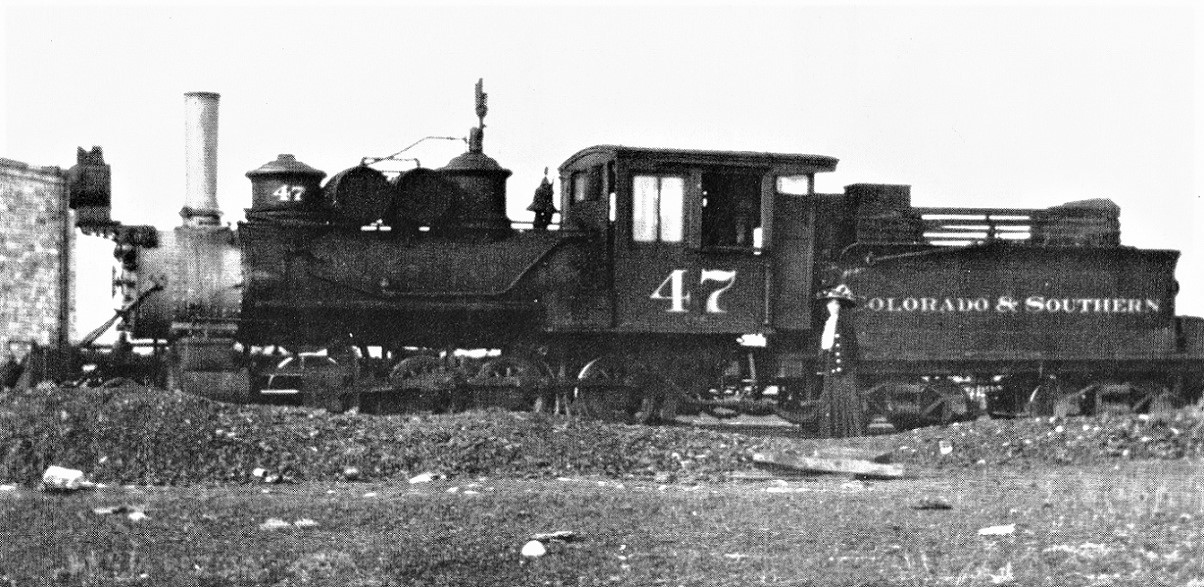 and second, engine 8 in about 1901 (also Pictorial Supplement): 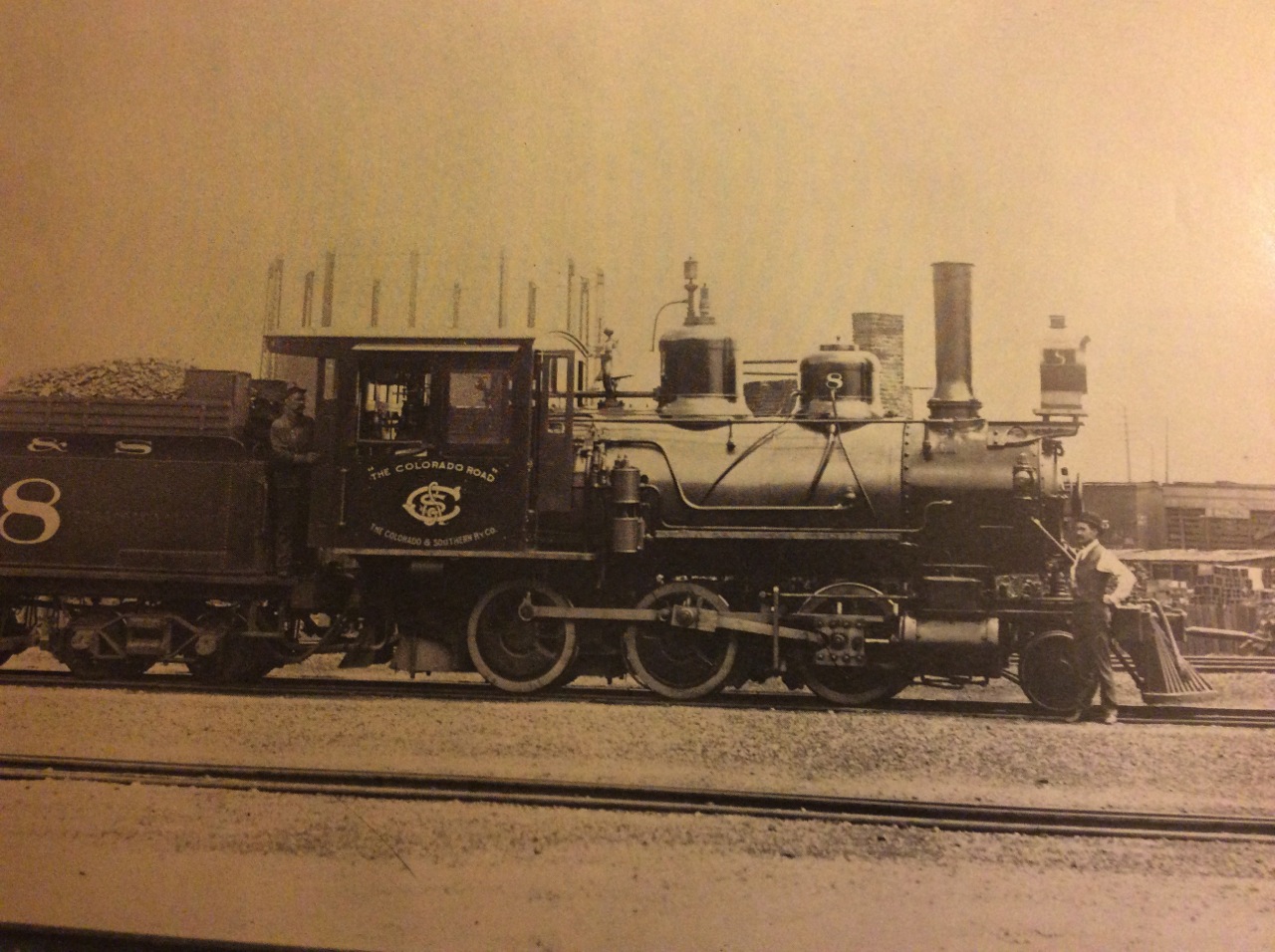 In these two, as well as other photos, I can also see no cable or other connection to the headlight. How were these powered? Cheers, John
John Greenly
Lansing, NY |
|
A question for which I've never found a good answer.
What we refer to as the arc type headlight may be nothing more than a decorative form of kerosene powered headlamps, functionally no different than the big box headlights. The bright light produced by carbon arc headlight would need an electrical source, not sure about acetylene. This link suggests the "dynamo" to power such devices may have been usually located in a baggage car: http://www.railroad-line.com/forum/topic.asp?TOPIC_ID=41660 The drawing suggest the dynamo was connected to a wheel axle by a belt, not requiring steam like the Pyle type generators that came along in the early 'teens. I guess they could have been located under the tender frame or even under the cab, connected to the rear driver axle. Still, if a small dynamo were located under the cab, where are the cables to the headlight?? Also found this info from past searches on this subject: An arc lamp has two electrodes that cause the electricity to arc between them causing a brilliant light. We most often think of arc lights when we see a search light in the sky, but the light bulbs used in many of today’s street and parking lots are also arc lamps. Alternately, Edison’s filament lamp operated by containing the short across a carbon filament that then glows and gives off light. Initially, Edison’s carbon filaments were too delicate to be used in railroad operations and so there was a rush to replace oil burning lamps with arc lamps. While the operational results were better than expected, there were still problems. For example, the arc headlight was so bright that it blinded the engineers of oncoming trains. Another issue was the lamp turning off when the train came to a stop in the station and the steam engine no longer drove the generator to run it. (Implies mechanical turning of a dynamo by an axle.) Enter Robert Pierce of Indianapolis who purchased the assets of the National Electric Headlamp Company. In association with another inventor, George Pyle, Pierce developed a separate steam driven turbine that would keep an arc lamp on even when standing in the terminal. In 1896, Pyle takes over the National Electric Headlamp Company and forms the Pyle National Company. Shortly thereafter he introduces a simpler but longer lasting arc lamp along with a redesigned, more powerful, and less expensive steam turbine to drive it. It’s a huge success and in 1899 the firm shipped 472 of its new headlamp versus sales of only 175 headlamps shipped by all US railroad headlamp manufacturers the previous year. Up to now, all arc lamps beams were broadcast on a horizontal plane. In 1902 Pyle introduces a headlamp that adds a vertical broad cast to the illumination. The new lamp proves to be visible up to 21 miles down the track. Collisions with livestock, wild animals, and wagons plummet. Finally, in 1913, Edison introduces a tungsten filament lamp with multi-elements. Tungsten proves to be much more ductile (able to be deformed without losing toughness) and is able to take the vibrations and abuse during railroad operations. The multi-elements increase the brightness. In 1915 the Federal government passes legislation that all locomotive must have headlamps. https://www.jacksonvilleprogress.com/opinion/mysteries-at-your-museum-about-that-light-in-the-tunnel/article_039ca488-36f3-11e9-af2e-7ba554de7ac0.html
Jim Courtney
Poulsbo, WA |
|
This is one of the few 1st decade, head on views of the "arc" headlights on C&S narrow gauge locomotives:
 C&S 9 with train at Dome Rock To me, it looks like the vertical glass chimney of a kerosene lamp. And so do these two views: 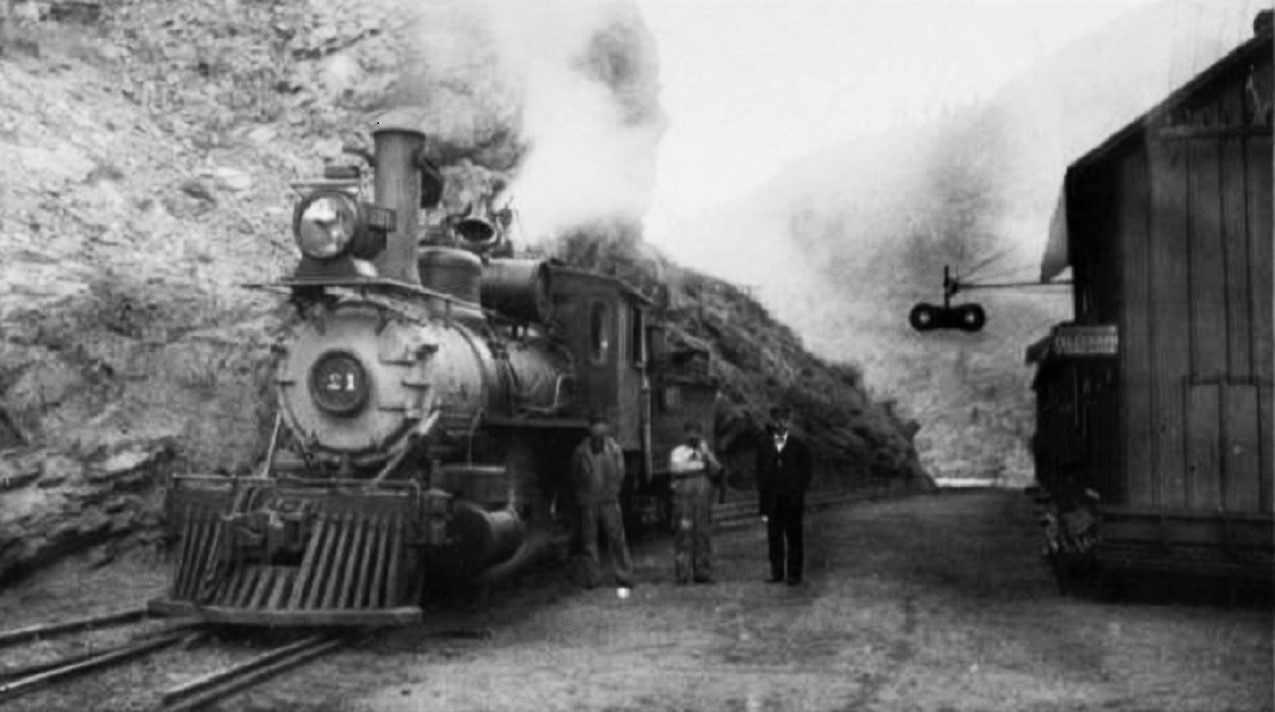 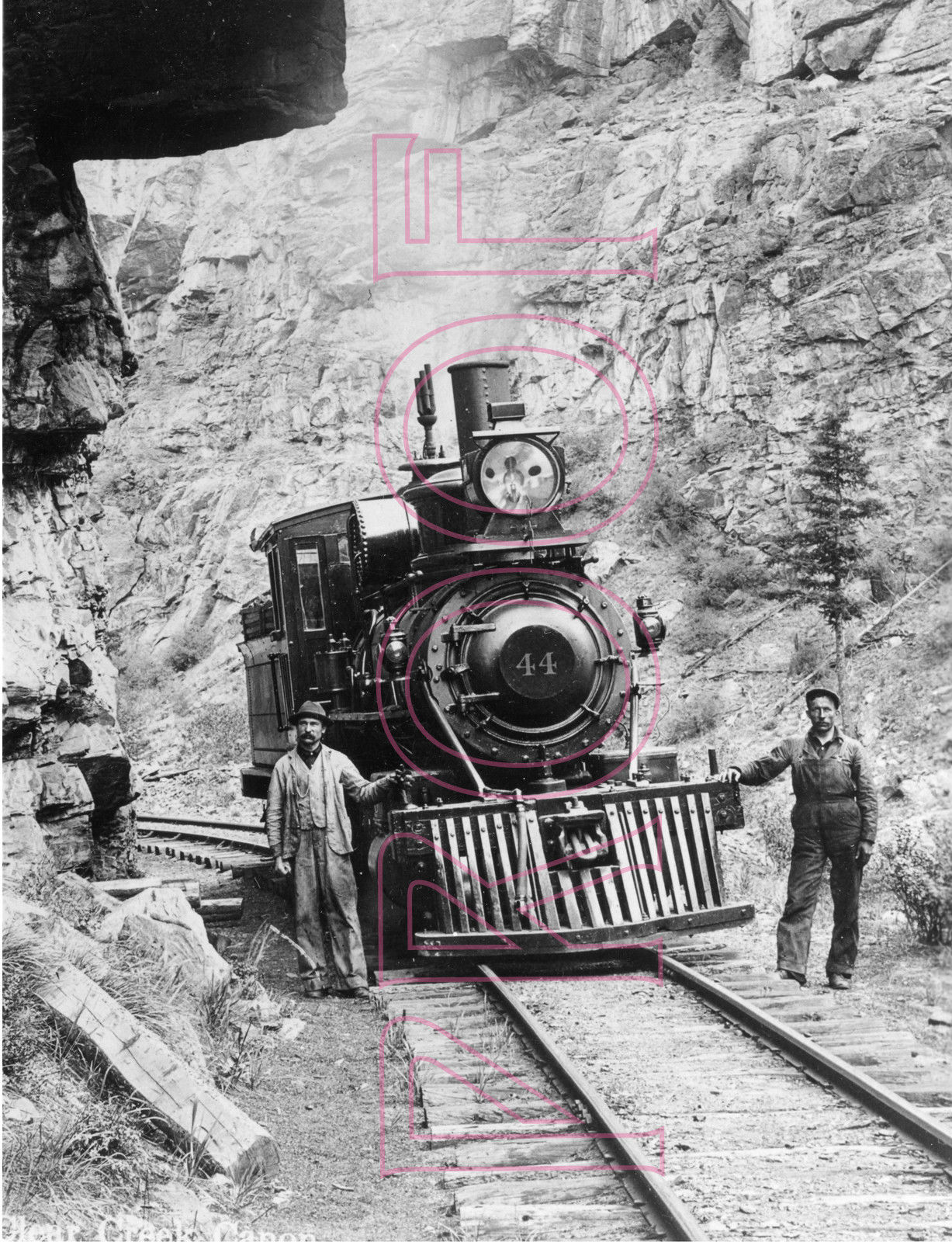 The holes in the reflector of number 44's headlight seem to allow venting up the chimney, illumination of the two side number boards, and access for the burner/wick to come up from the bottom. (That's also a pretty clear look at the stubby wood pilot, for estimating dimensions). So is it possible, that what we call the C&S "arc headlight" is just as decorative kerosene headlamp, and these housings were modified after the USSA 1915 requirement for electric headlamps? I can't find any photograph that suggests a power cable or conduit to the headlight prior to the addition of steam dynamos to the tops of the boilers.
Jim Courtney
Poulsbo, WA |
|
This post was updated on .
Jim,
excellent! Thanks so much for these photos. Yes, I was coming to the same conclusion, but I didn't want to make a claim without good photographic evidence. your photos are unquestionable. These headlights had to be kerosene lamps. Here's an illustration I found yesterday: I'm suspecting that the change from the big box headlights to these may have come with the introduction of better kerosene lamps like the central draft or "blast" burner types developed around 1890 that gave much more light than the early flat wick lamps. So, yes: no wires, no electricity. And acetylene lamps need a gas feed. Typically the acetylene generator was located under a running board on the loco- this worked by dripping water on calcium carbide in a closed container, and the gas produced was piped to the light. By the way, as to dynamos, the word refers to a generator using a commutator to produce DC current. A dynamo is basically a brushed DC motor, but instead of supplying current to make it turn, you turn it to generate current. Any permanent magnet DC motor will do this, but true dynamos did not use permanent magnets. They had field coils, electromagnets, that used the current generated by the dynamo itself to produce its own magnetic field- a very clever "bootstrap" process. I also found reference to axle-driven dynamos in baggage cars, but it wasn't clear to me whether these were used just for lighting passenger cars, or for the loco as well. Here's a detailed history and technical discussion of the Pyle steam-driven dynamo and arc light if anyone's interested: https://books.google.com/books?id=fKZIAAAAMAAJ&pg=RA6-PA1&dq=electric+headlight&hl=en#v=onepage&q=electric%20headlight&f=false go to the fourth result in this Google book and click on the "electric headlight" chapter. It's interesting that modelers seem always to refer to these shapes as arc headlights- PSC, Cal-Scale and others all do. These lights do look like they were configured in such a way that it was easy to replace the kerosene lamp with the vertically oriented arc electrode assembly, and the arc needed the cooling airflow allowed by this design. By the way, that photo of C&S 44 is wonderful, I haven't seen it before. All sorts of great details- the pilot, yes! Also notice the riveted shotgun stack- I've never seen one like that before. thanks! John
John Greenly
Lansing, NY |
|
In reply to this post by John Greenly
John, Thanks for bringing this up. It's a good question and I've wondered about this as well.
The holes in the reflector of the headlight don't necessarily imply kerosene smoke venting. A carbon arc also produces lots of very hot air and some smoke and needs venting. So the typical "arc" headlight had a vent on the top that could have supported either kerosene or carbon arc. Check Coleman's Pictorial pages 66 and 67 showing the #13 in 1903 and 1922. The headlight seems the same. The earlier headlight is surely kerosene and the later has a generator and power wires implying carbon arc. The external headlight structure is the same in each. Also, the B3B #21 and #22 have the "arc" headlights and have generators between the air tank and the steam dome. The B3A #11, #12, and #13 have the air tank moved back toward the steam dome and no apparent generator on the boiler top. BUT in the (1917) como spark arrestor era up through the early 1920s, the #13 shows a generator on the headlight platform between the headlight and stack as does the common photo of the #37 in Denver showing off its como spark arrestor (Coleman 86, 87). A few other B4Bs in that time frame show the headlight-platform generator and others don't. The #11 and #12 in this time frame show no such headlight-platform generator. 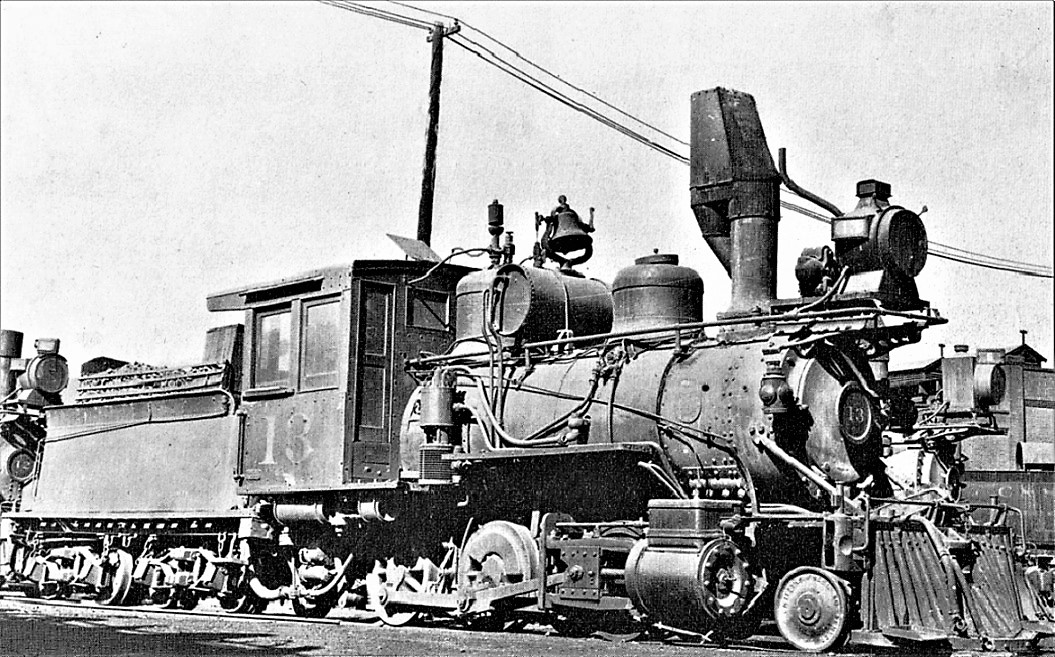 Note that there seems to be an electric line from the headlight on the #13 down to a tee on the handrail. I understand that the handrails were used as early electrical conduits. This would distribute the generator's power to the rest of the locomotive. But look behind the #13 at the front of the #12. It has no headlight-platform generator but does have the power line from the headlight to the tee on the handrail implying that the generator was somewhere else. So I wonder where it could be? Skip Egdorf Los Alamos, NM
Skip Egdorf
|
|
This post was updated on .
Hi Skip,
everything you say makes perfect sense to me. Certainly, as I mentioned in my earlier post, these headlights seem to have been well suited to use with arc lamps, with their design for airflow and venting. And these same lights persisted on many engines well into the filament electric (incandescent) bulb era too- but whether they were converted to incandescents or not I have no direct evidence. In fact, given that many boiler-top generators appeared around 1915 or so, after the tungsten-filament lamp that could withstand the conditions on a locomotive had been developed (Edison, 1913, as Jim quoted), is it possible that some of these lights were converted directly from kero to incandescent, and were never arc lights? I don't know. It seems very likely that since these headlight assemblies were already being manufactured and were quite suitable, they continued to be sold new with arc lamps when those came into use in large numbers, and that may be why they became known as arc headlights. Thanks for pointing out the electric cable connections through the handrails! I never noticed those before. I think that may have not have been used after the generators were moved back behind the air tanks, I remember seeing cables all the way to the headlight in those installations. But now I'll be on the lookout! Cheers, John
John Greenly
Lansing, NY |
|
This post was updated on .
Here's an operational question about headlights. Who in the train crew was responsible for taking care of the headlights? Both kerosene and arc lamps needed a lot of upkeep- cleaning, refilling, adjusting and replacing parts. The carbon electrodes for arc lamps, in particular, were delicate, easily fractured, and needed a good protected place to be stored. The caboose, maybe??
I don't recall ever seeing a photo of someone working on a headlight, nor have I read an account of this. I'd be interested to know more. It might also help determine what kind of lamp these held at different times. Also, I've read in multiple places that train crews didn't like arc lights because they were so bright that they blinded oncoming crews at meets, and could blind their own crew with backscatter in fog, cloud or snow, the way high beams do on car headlights. Arc lights couldn't be dimmed electrically, and so they commonly had shutters or shades that could block or reduce the light to deal with these problems. I've imagined that the cloth shades mounted on the C&S lights were used for this purpose, but again, I've never come across a description of operation of these lights. any operational info here?? John
John Greenly
Lansing, NY |
|
I believe it was the fireman's responsibility to maintain the kerosene headlights.
As headlights were not used as warning devices during daytime hours (until the 1940's), the lamps would be lighted at dusk. As these were binary, on or off, devices, when meeting an opposing train, the fireman would lower the blinds on the headlight once the train was in the clear on a siding. Modern diesels merely dim the headlights. 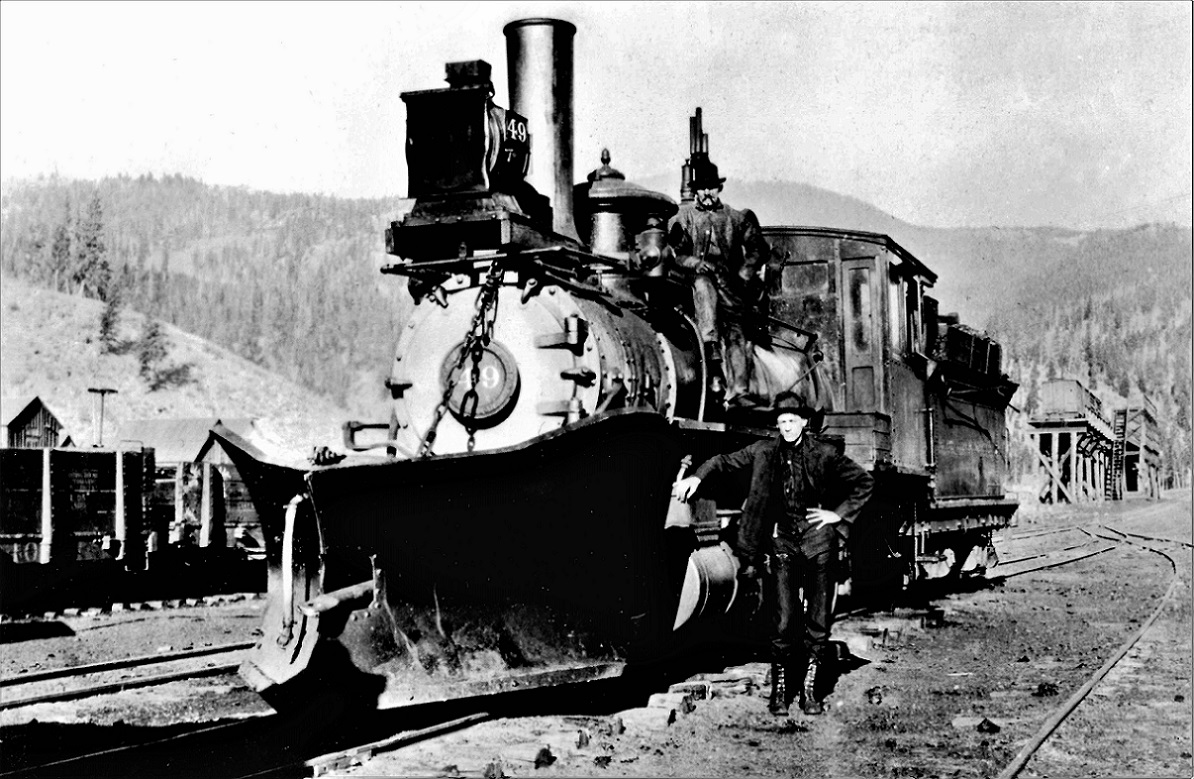  The blinds were located in a small horizontal housing above the lens: 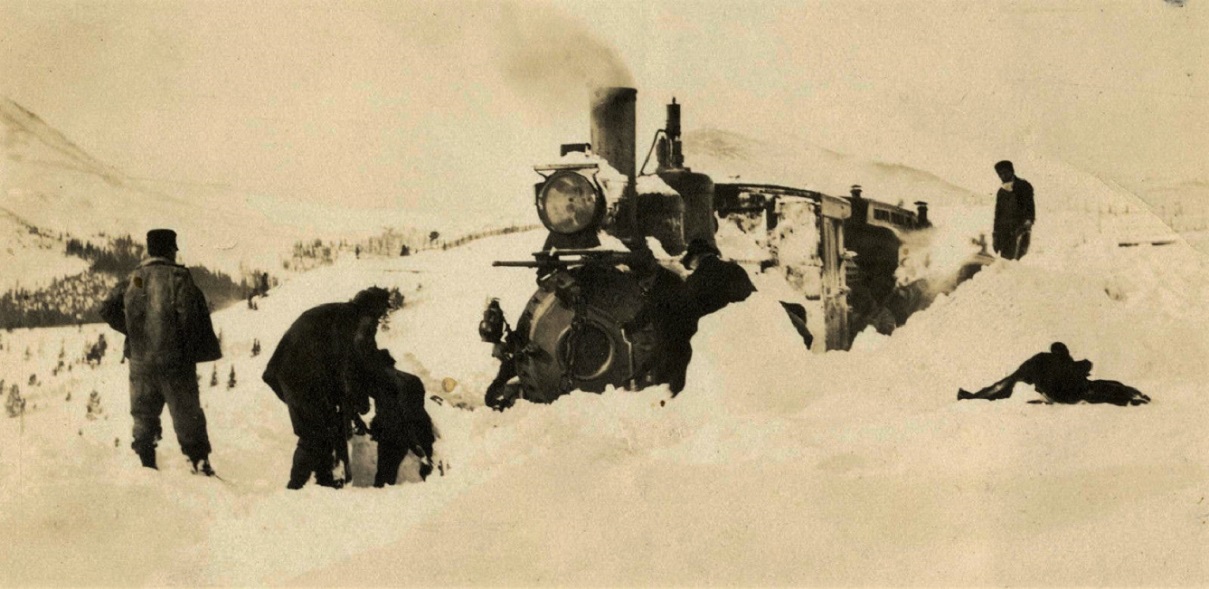 After electric power was installed into the old housings in 1915, the blind housing was often removed, like on Skip's photo of number 13; but the two supports often remained, looking like two little Detail Associates "lift rings" sticking out from the lens housing. I have come to believe, that on locomotives that commonly made runs only in the daytime hours, circular sheet metal protective covers were applied to protect the glass of the lens from dirt, grime and breakage, especially locomotives working through snow drifts in winter: 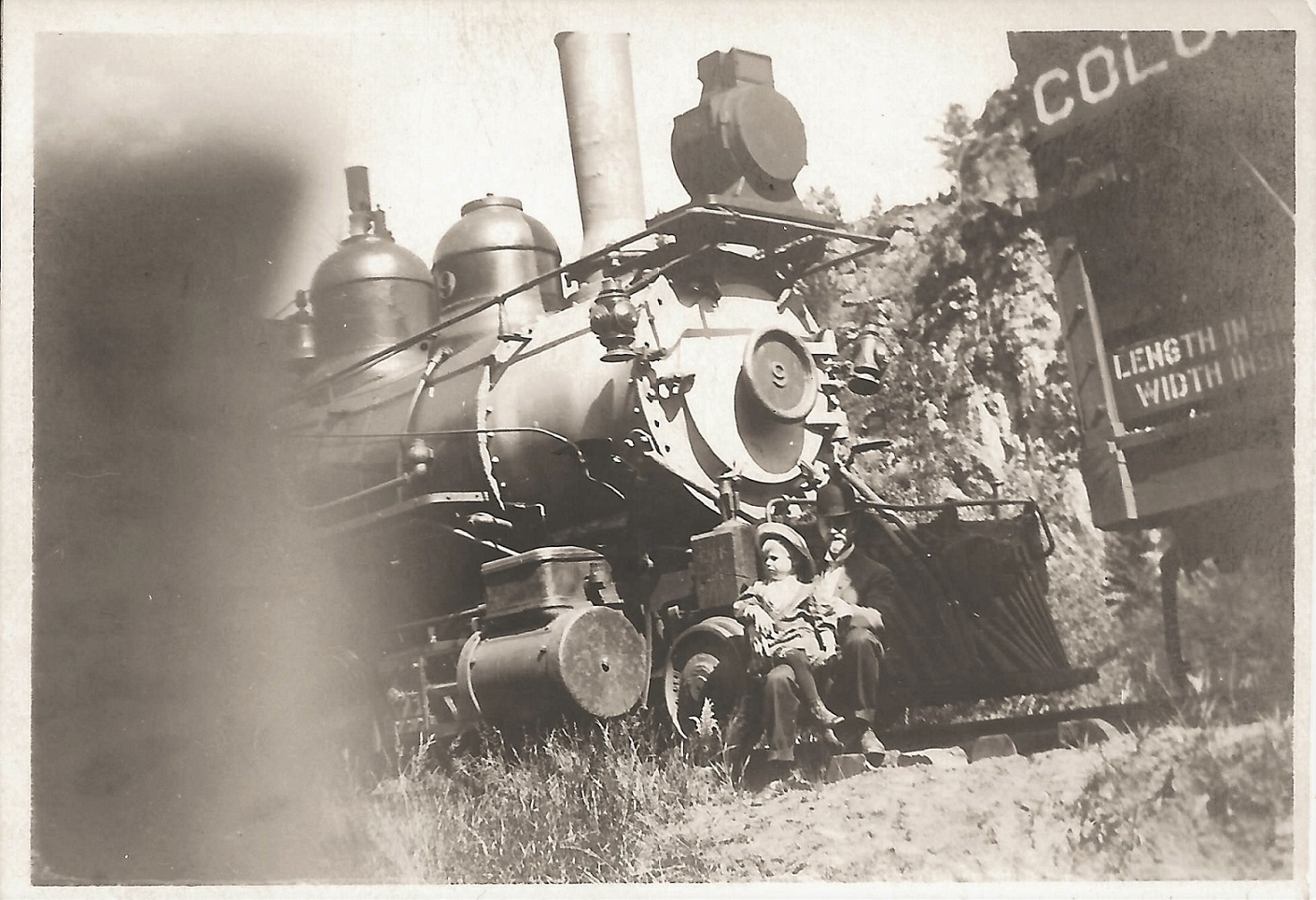 Looks like a series of set screws around the cover plate circumference -- or am I imagining things, and this is just a filthy front glass? 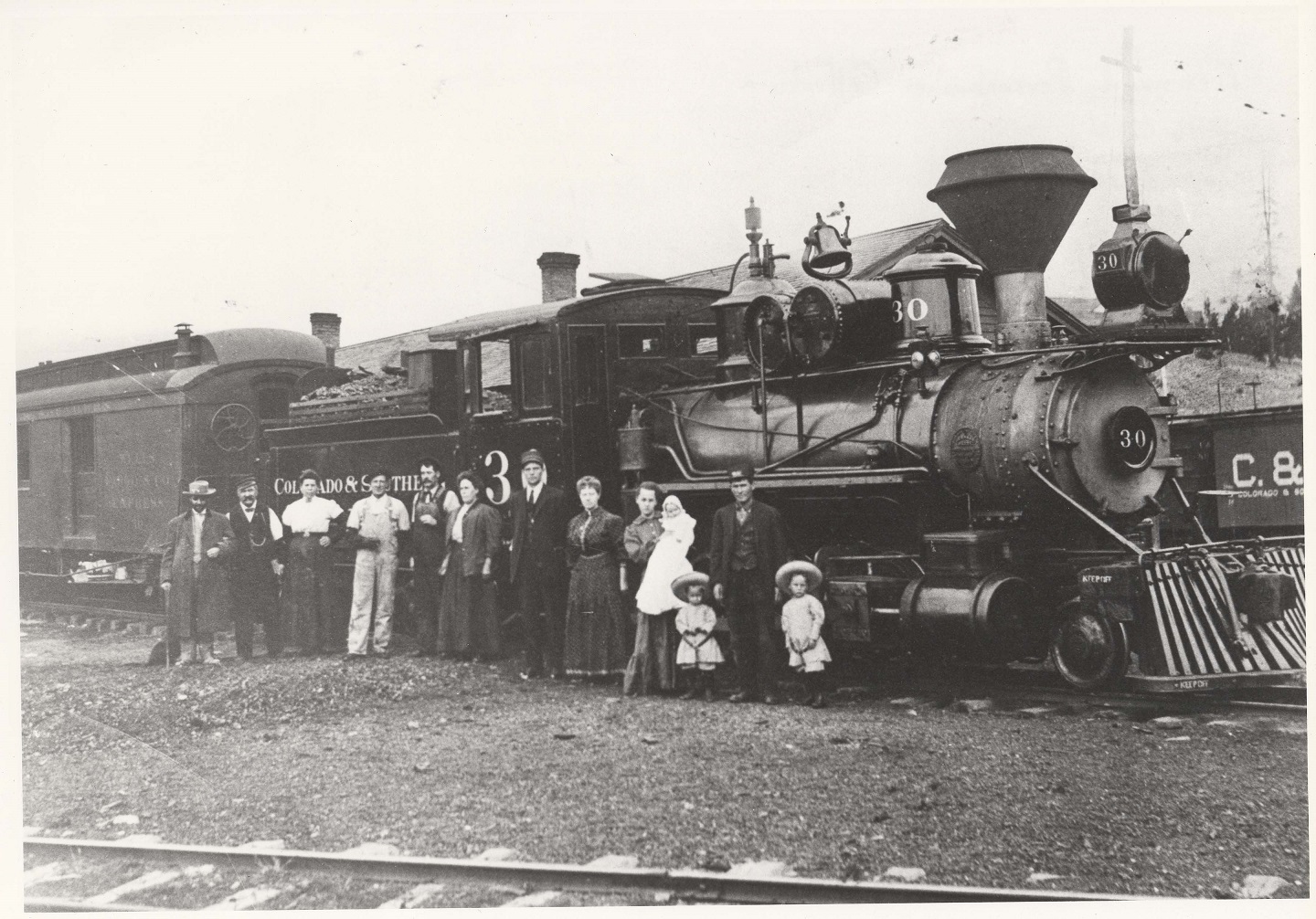 Some covers were low tech:  It would make sense to provide a covering system to prevent breakage: 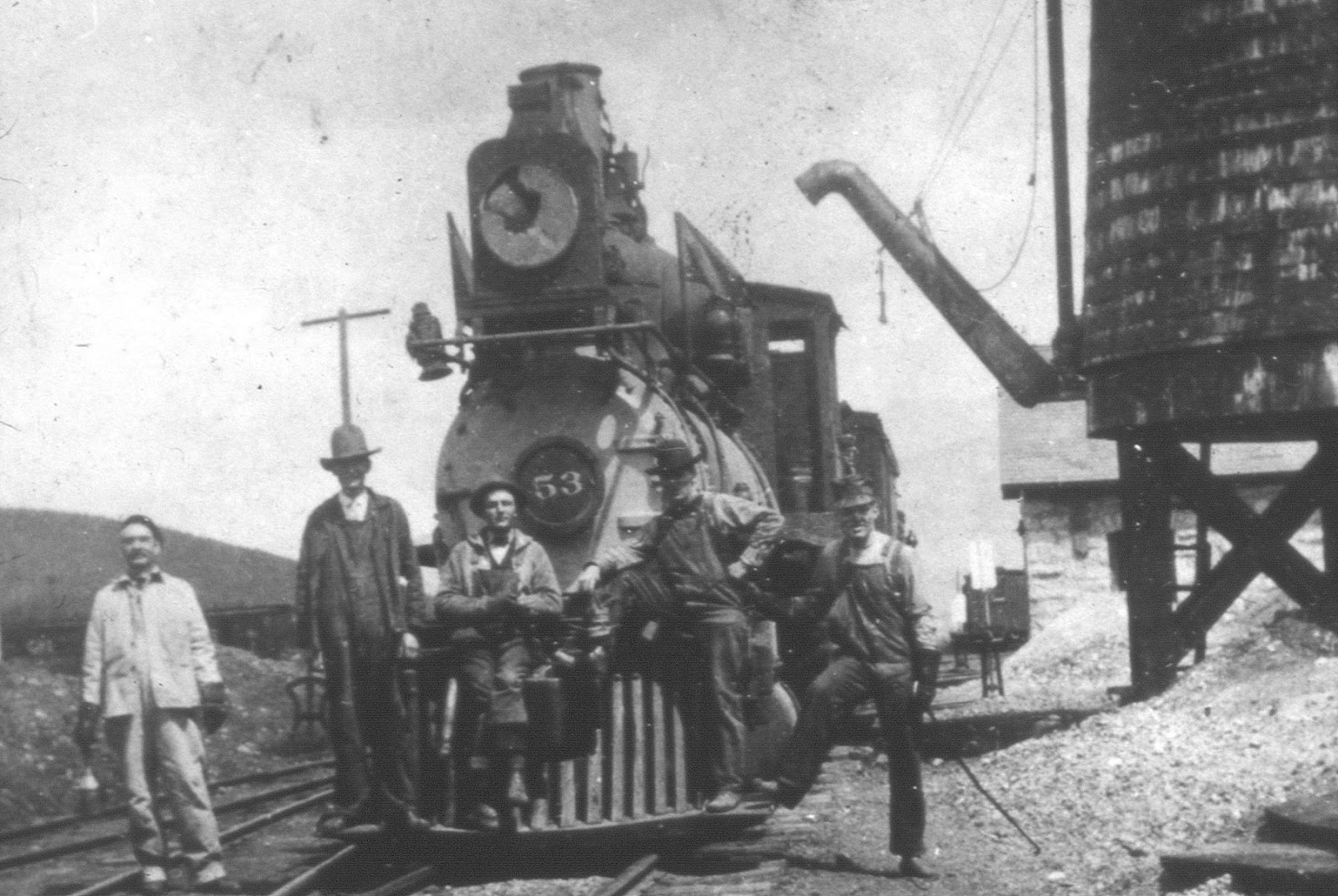 Cooke 2-8-0 number 53 has the exhaust pipe of the generator just visible behind the old box headlight housing, so this must be after 1915, verifying that a few Cookes were still in use on the High Line at this late date--not all were stored in "white lead" in the Como round house addition.
Jim Courtney
Poulsbo, WA |
|
Fascinating stuff about headlights…
… but why is there a boxcar on top of the coaling trestle at (presumably) Pitkin? |
|
In reply to this post by John Greenly
Interesting thread. I went through Coleman looking at generators and headlights. In general, C&S seems to have favored Pyle generators although many cases are hard to identify. When generators are visible, they are either on the headlight platform (mostly in the late teens), behind the air tank in front of to the steam dome (B3Bs, most 2-8-0s), or between the steam dome and the cab (B3Cs). The interesting case is some early headlights with what seem to be electric cables but no visible generator. Where did the power come from?
I then dug into a set of old engineering textbooks I have. A bit late for the oil-headlight arc-headlight discussion, but interesting to see the state of the art in 1923. The reference is (from the front page) "International Library of Technology. A series of textbooks for persons engaged in engineering professions. Scranton International Textbook Company, 1923." I understand that these were college-level texts for engineers in training. The volume on boilers for example has all the math and engineering to compute staybolt stresses, boiler efficiencies, etc. I dug into the section in vol 69D on Locomotive Headlights To see what it said about accepted practice for mounting and use. John, there is quite a bit on maintenance and inspection, but it seems to be up to the individual railroad who does what and when. Sorry. Jim, as to control of glare, it has an interesting section where they refer to the headlight lens or "...Goggle Glass that is clear on a road engine", but "In the case of an engine used in switching service however, a single powerful beam of light is not desirable. It is too brilliant and produces a blinding glare that may prove dangerous to switchmen, yardmen, and enginemen. For a switcher headlight a softer light is desired. Such a light may be obtained by using a goggle glass that scatters or diffuses the light." An example is given that uses a lens with a smooth outer face and a grooved inner face to give a diffused light. Clearly the C&S used more primitive tools. The section goes into a lot of detail on three generators: The GE turbo Generator (no part number given), The Sunbeam RE-3, and the Pyle K-2. It seems from the pictures that the C&S used the K-2 in most cases in the 1920s and 1930s. The earlier generators as on the #13, #21, #22, and #37 all seem to be the Pyle configuration but I can't tell if they are K-2's or earlier models. I haven't been able to find when the K-2s entered service. Each of the three was a steam turbine powered generator with normal spinning-weight governor to give 32 volts at about 500 watts. Maintenance procedures listed adjusting the governors to adjust the speed and give the required voltage. There is a section on locating the turbo-generator: "The turbo-generator should be located on top of the boiler just in front of the cab, in front of the whistle dome, or just behind the stack." and "The turbo-generator should be set crosswise of the boiler and should be level on the bedplate." Under the section on steam piping there is description of a globe valve for the engineer to put steam to the turbine and that "Long steam lines are to be avoided if possible." There is nothing about getting power from passenger cars or mounting generators anywhere other than on top of the boiler. So the big question remains: When a locomotive like the #12 had a clearly electric arc headlight from whence came the power? Skip Egdorf Los Alamos, NM
Skip Egdorf
|
Re: arc headlights and dynamos
|
In reply to this post by Jeff Young
Unloading a load of coal.
|
|
In reply to this post by Jeff Young
Jeff,
As Robert implied, coal was also transported in both stock and box cars:  Gold Pan Shops and Boiler House, c1902.
Jim Courtney
Poulsbo, WA |
|
Administrator
|
I seem to recall seeing letting on some stock cars as "Coal Loading Only".
|
|
This post was updated on .
In reply to this post by Jim Courtney
Jim,
great set of photos of headlight blinds! So it was the firemen- wonder if any of them ever talked about this job in recorded oral history? For those who have lived with kerosene lamps, it's not surprising that a blind would be used rather than dousing and relighting the lamp- they like to run at a steady temperature. One thought- if indeed the blinds ceased to be used when generators appeared on the boilers, I believe that argues against arc lamps. I read that arc lamps also don't do well with cycling off and on, they like to run continuously, and that's why on railroads they were commonly equipped with shutters or blinds rather than just switching them off and on. Incandescent bulbs, even early ones, were more forgiving of on/off cycling. So this makes me more suspicious that on engines that acquired generators after about 1915, the headlights may never have been arcs, but went from kerosene with blinds (no generators), to generators and incandescent bulbs, no blinds. Is there evidence to the contrary? Skip, thanks for the search! As to those headlights with what looks like an electric cable but no generator visible, well...?? I don't know. Is it conceivable that this was an acetylene lamp with a gas feed tube rather than an electrical cable? If a baggage car generator was used to power a loco headlight, this would have to be a loco restricted to passenger service only, otherwise no light! And maybe such an engine would always be with the same baggage car. Is it possible that this was true of #12 for some time? John
John Greenly
Lansing, NY |
|
In reply to this post by Jim Courtney
I believe it was the fireman's responsibility to maintain(cleaning, bulb changing as required) the headlights.
And right up until the end of the "fireman" here in the late eighties Jim.  https://flic.kr/p/LxsvAv
UpSideDownC
in New Zealand |
Re: arc headlights and dynamos - A bit more research
|
This post was updated on .
In reply to this post by skip
Skip,
I just looked through the photos of #12 in Coleman, and I believe it did have a generator behind the air tank. The photos are from 1921 when generators were universally in use. In the photo on p.62 there are cables to that location and I think you can see the generator just peeking out behind the lower edge of the tank, and the tip of the exhaust pipe is just visible above the tank behind the bell actuator. Look also at the photos of 21 and 22, for instance, p.74. Those engines both definitely had generators by 1917-18, but they're invisible in photos from similar angles as the #12 photos, except the exhausts can be spotted more easily if you look closely. What do you think? Now that you've pointed it out, I'm seeing the headlight cable routed through the handrail on a number of engines! Cheers, John
John Greenly
Lansing, NY |
Wow John, good eyes! I am not completely convinced, but there does seem to be something there. In particular, the metal frame that holds the tank on the #11 and #13 only extend back to the back edge of the tank. The picture of #12 does seem to show the frame extending a foot or so farther back than on the other two B3As and it could hold a small generator. In the past when I looked at the two tubes running back into the cab, I had casually and carelessly thought that they were the common steam hoses that are often wrapped around the dome to run steam out of the globe fitting typically on the front of the dome. You see that on a lot of the engines. But these lines don't run around the dome as I had thought. They do seem to run back into the cab where they would re-distribute the juice up the handrail conduit to the headlight. Coincidentally, this fits with one other bit of evidence. You may recall that I did a #13 from a Key #22 a while back. It is lacking a bit, but for some odd reason I really like the little thing. It has become one of my favorites. It peaked my interest in the other two B3As and Christmas found a couple more Key #22s. So I am in the process of building the #11 and #12 so that the #13 doesn't get lonely without her sisters. The Faulhaber conversions and the rebuild of the gearing are complete and I am in the process of butchering all the boiler details. I spent a bit of time with the photos estimating camera positions and doing the trig to try to get the measurements as close as possible. And to my surprise, it seems that the air tank on the #12 is a foot or so forward of the position on the #11 and #13. Those two have the tank about 2/3 of the way back from the sand dome to the steam dome. The #12's tank seems to be about in the middle. The #12's position is not as far forward as the B3Bs but the #12's position does seem to be a bit different than the #11 and #13. Looking at the pictures with your suggestion, I am wondering if the shop put a generator between the tank and the steam dome like on the B3Bs? The general wisdom has always been that the #21 and #22 had the tank forward with a generator and the #11, #12, and #13 had the tank back with no generator. But now I am wondering... You realize that you are really screwing up my latest project here. I just got done soldering the tank into its hopefully correct position on my new #12 and now I am wondering if I need to pull it off, extend the frame and add the generator. Oh well, that's the fun of digging into this stuff. So while I am cursing you under my breath, thanks a lot for the close look. I think you may be on to something here. Let's keep looking. Skip Egdorf Los Alamos, NM
Skip Egdorf
|
|
This post was updated on .
In reply to this post by John Greenly
John, thanks for starting this thread. You have a knack for asking simple but clarifying questions.
Being an OCD kinda guy, I spent several hours last night looking through my collection of C&S narrow gauge locomotive photos. I can find no photo, dated to before 1915, with a generator visible on the boiler or behind the headlight bracket. Nor can I find any photo with what looks like an electrical cable or conduit attaching to the headlight housing, regardless of type. The earliest dated photo I can find, of a generator on a C&S narrow gauge locomotive is this Otto Perry photo of number 7. It is not surprisingly dated to 1915, the year electric head lights were mandated:  So, I am convinced that the C&S narrow gauge locomotives used kerosene lamps from its inception until electrification was added in 1915. I wondered when the C&S standard gauge got around to electrifying headlights, figuring that new stuff would occur on the standard gauge before making it the the narrow gauge. So I spent some time studying Hol Wagner's book and DPL photos during the 1900-1915 era. The earliest C&S locomotives to carry electric lights were ten-wheelers of the C-3H1 and C-3H classes, built by Schenectady and Baldwin in 1906 and 1907 respectively:  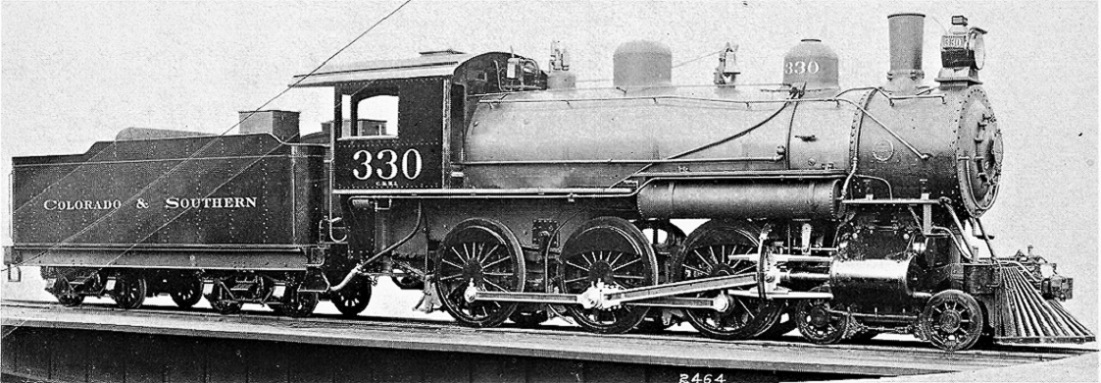 Both classes had round headlight housings similar to those on narrow gauge engines. Since this was prior to the 1913 date of tungsten filament incandescent bulbs, and 330 is equipped with blinds, does this mean these are carbon arch powered lights? If so, carbon arch equipment appears to be able to fit in any headlight housing. Perhaps Skip can compare the generators to the illustrations in his catalog. These ten-wheelers were the heavy passenger power of the day, used south of Denver to Trinidad and on to Texas, and use of electric lights makes sense. By 1914, even the earlier, lighter ten-wheelers had picked up electric lights:  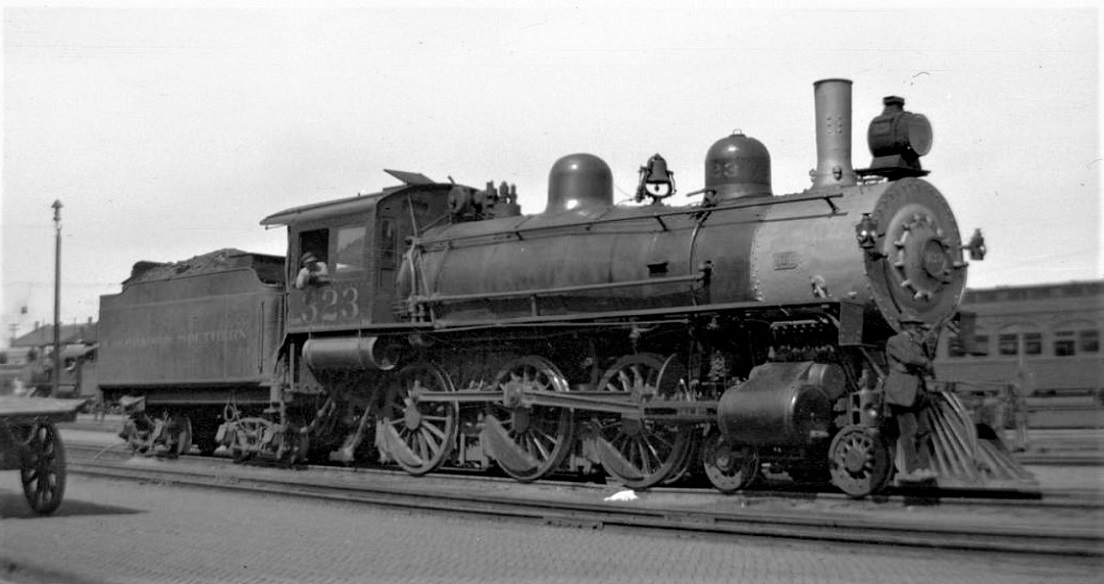 Both Otto Perry photos from DPL On the other hand, freight locomotives continued to be delivered without evidence of a generator, suggesting that kerosene lamps were still in common use. The class B-4R heavy 2-8-0's were delivered in 1907 and 1908: 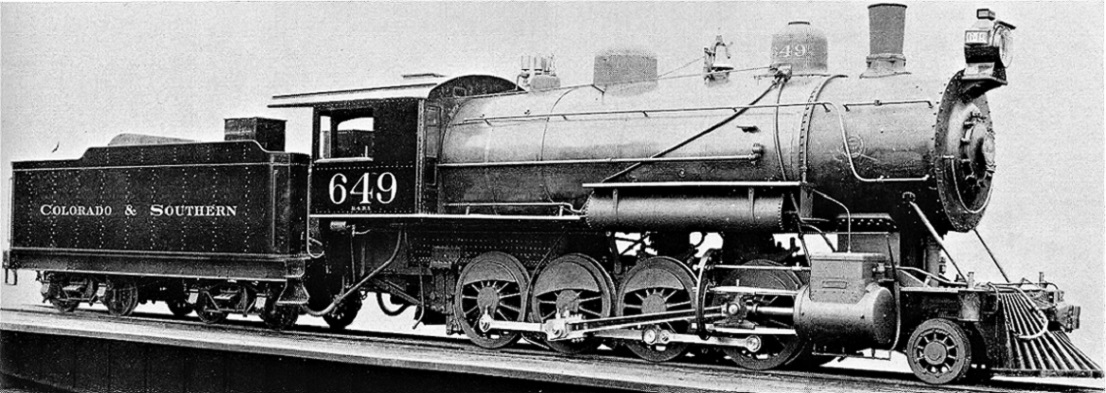 The headlight casing looks identical to those on narrow gauge locomotive and were delivered with headlight blinds, no generator and no visible wiring to the headlight. Even the first 2-8-2's, the E-4A class locomotives built by Baldwin in January, 1911, were delivered without visible generators, though featured a new style of box headlight, with small cylindrical vent on top. The same type of headlight housing became something of a new standard, many of the C&S narrow gauge locomotives equipped in the 1920's to early 1930's. Number 69 kept its box headlight, sans vent, until the early 1940's. C&S 802 was photographed in October of 1912 during road tests with a CB&Q dynamometer car. Note the new box headlight, but no generator or wiring to the headlight. Did it use kerosene??  B.G. Corbin Collection in Wagner's The Colorado Road The first 4-6-2 passenger locomotives, the F-3A class, was built at about the same time 1910-1911, and like the ten-wheelers, were equipped with generators and electric lights, although used the same new box headlight style as the 800's: 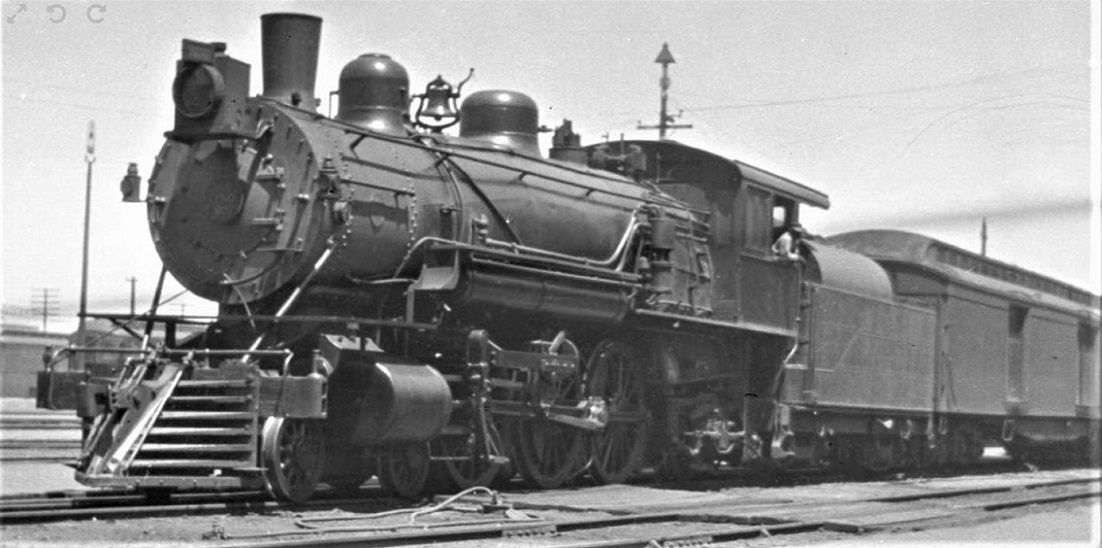 One of Otto Perry's first photographs, dated to 1912 by Wagner, but dated to 1915 by DPL. So the new style box headlight housing apparently used both kerosene and electric lighting, depending on the locomotive. The earliest photo of a C&S freight locomotive with generator and presumably electric headlight were the big E-5A class 2-10-2's delivered by Baldwin in May, 1915, the mandated year of compliance for electric lights on all locomotives: 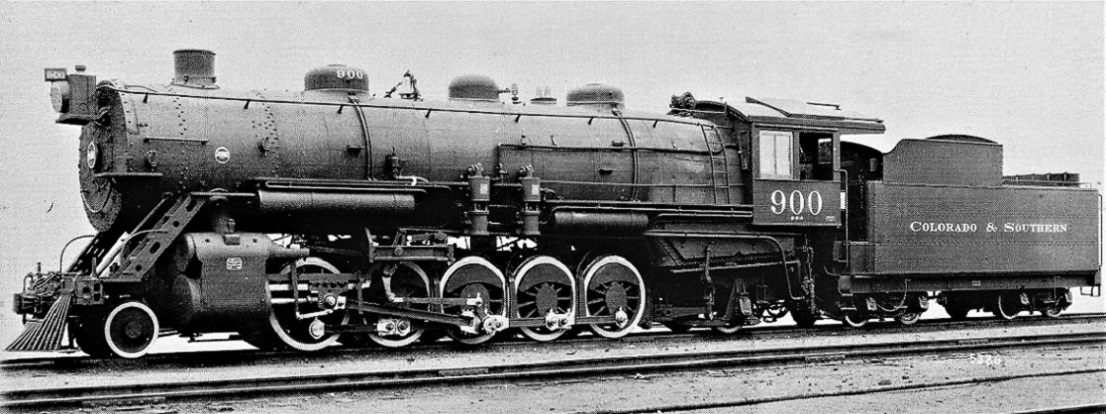 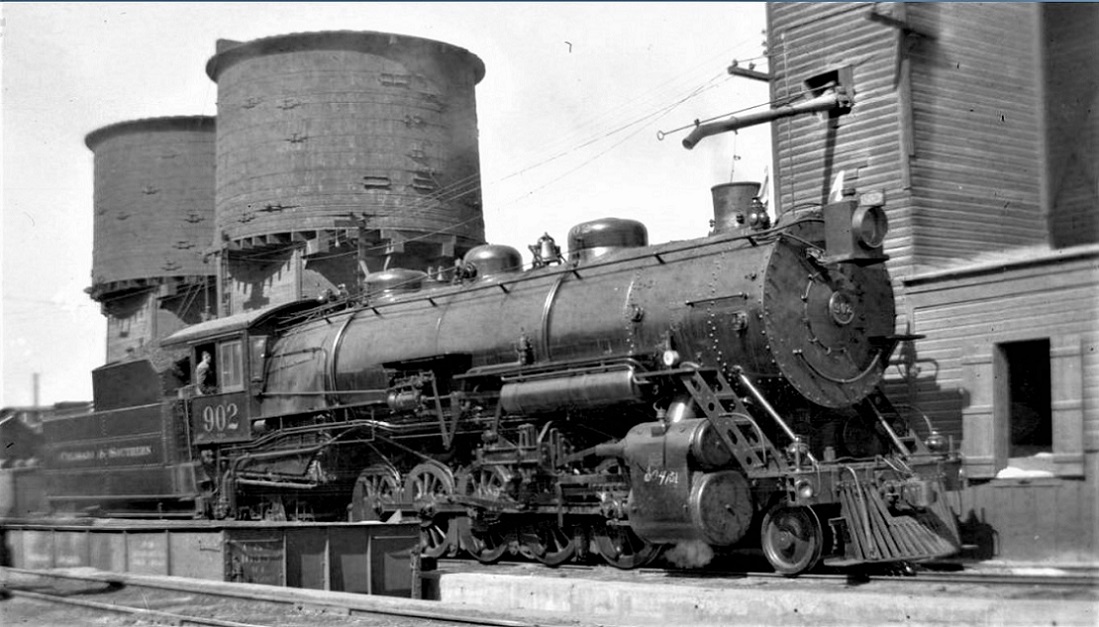 Builders photo by Baldwin, lower photo by Otto Perry, 1915, on DPL. So, the technology for electric lights was available on the C&S as early as 1906, but it appears the railroad drug its feet in installing electric lights on the narrow gauge locomotives until forced to in 1915. The new style box headlight seem to make it to the narrow gauge, as a kerosene head lamp by 1912-1914. Two photos from the C&S 9 derailment near Garos demonstrate the late, pre-electrification headlights: 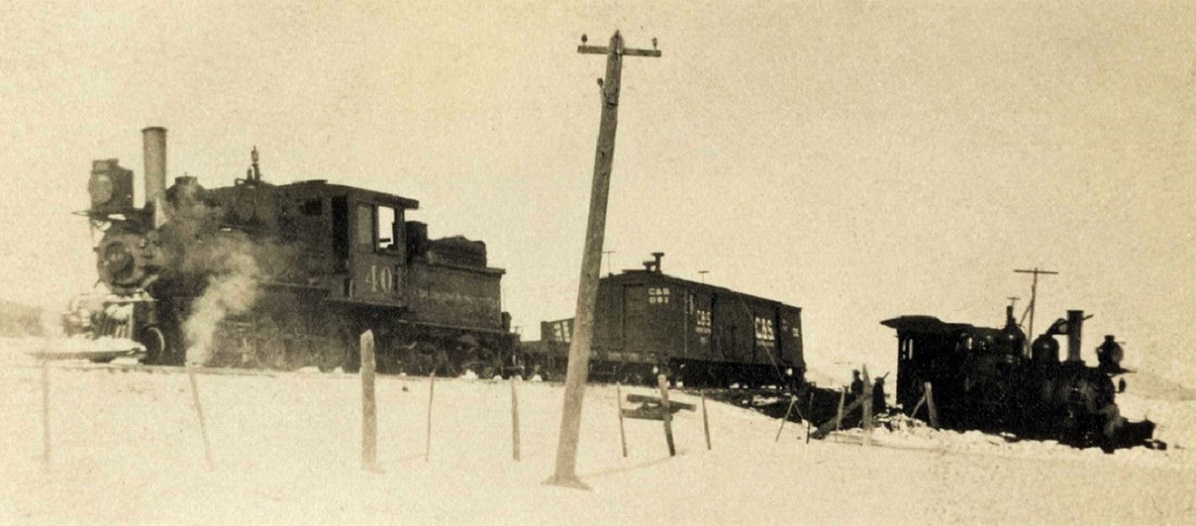  Cooke 2-8-0 number 40, on the work train, has the new style box headlight, while number 9 still has the round style headlight housing with blinds. Anyhow, I have promised myself to never use the term "arc headlight" again. It seems that we need a new nomenclature as to C&S narrow gauge headlight styles. I'll make some suggestions next time . . .
Jim Courtney
Poulsbo, WA |
Re: arc headlights and dynamos - A bit more research
|
In reply to this post by skip
Hi Skip,
well I hate to cause you grief, but yes, look closely at the photo of #12 on Coleman p.62. As you know, the air tank is mounted on a pair of longitudinal brackets, consisting of steel strips with their ends bent down vertical to form the feet that attach to the boiler. This is a standard mounting used on lots of C&S engines. In the photo you can clearly see the rearward extension of the bracket, and on it sits a horizontal plate on which the generator is mounted. It looks exactly like the one on engine 21 on p.71, you could take dimensions from that nice side view. One difference is that the turbine exhaust pipe on #12 is probably not quite as tall as on #21. You can barely see its rearward-curved end just exactly over the top of the near end of the air tank in the p.62 photo. If you're not as nearsighted as me you might need a magnifying glass to see it, but it's there, in just the correct place coming up from the turbine which is over on the far (fireman's) side, as you see on #21 p.72. please do post some photos of your models, I'd love to see them! Cheers, John
John Greenly
Lansing, NY |
|
This post was updated on .
In reply to this post by Jim Courtney
Hey Jim,
this is excellent! What great photos! Your chronology looks good to me from the photo evidence. I think in general, as I suggested before, that we can guess that headlights after 1915 with electric cables and generators but no blinds were likely incandescents and not arc lamps. On the other hand, the earliest electrified headlights, any before 1913 for sure, installed in existing headlights replacing kerosene lamps were almost certainly arcs. And of course in any year headlights without generators on the boiler were almost certainly kerosene. Looks like all your photo evidence fits this scheme. So on the narrow gauge there may not have been arc lamps in any headlights- but I'll keep watch for evidence to the contrary! By the way, if you look at the technical reference that I gave in an earlier post, you'll see how the Pyle arc lamps were configured. They were vertically long and narrow. It looks as if they could have been quite straightforward to fit in either the round or box headlights as a replacement for the kerosene lamp and its chimney. I suppose probably made that way on purpose! John
John Greenly
Lansing, NY |
«
Return to C&Sng Discussion Forum
|
1 view|%1 views
| Free forum by Nabble | Edit this page |

